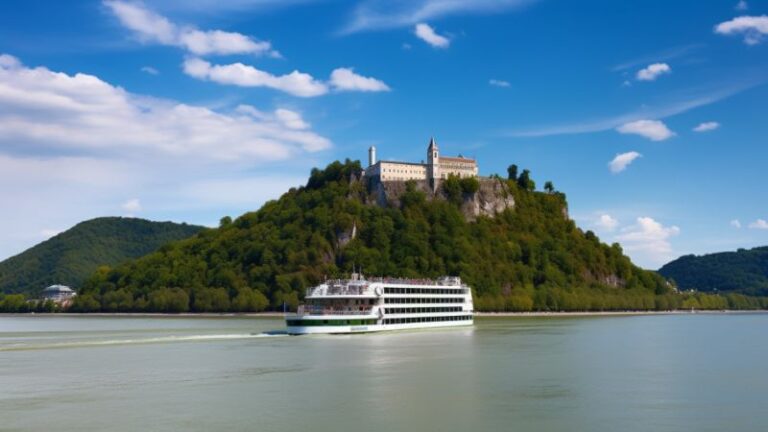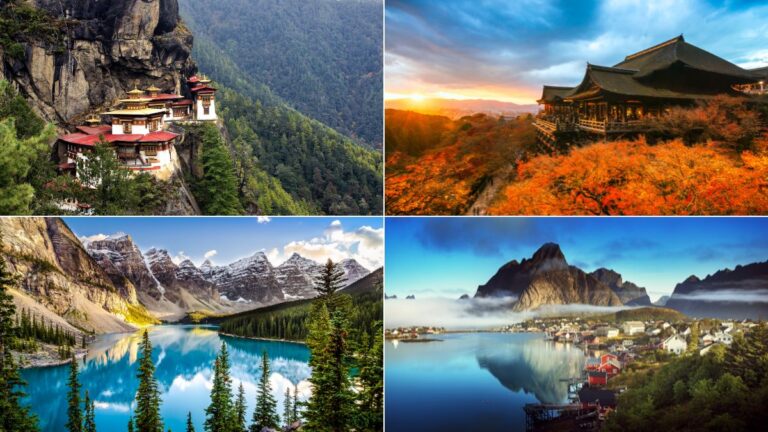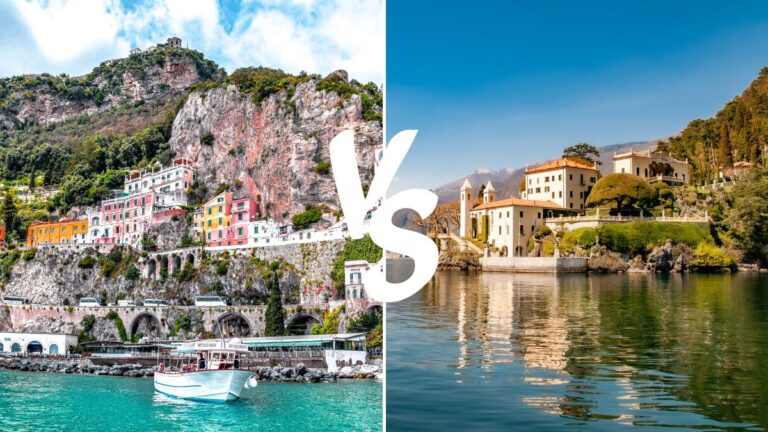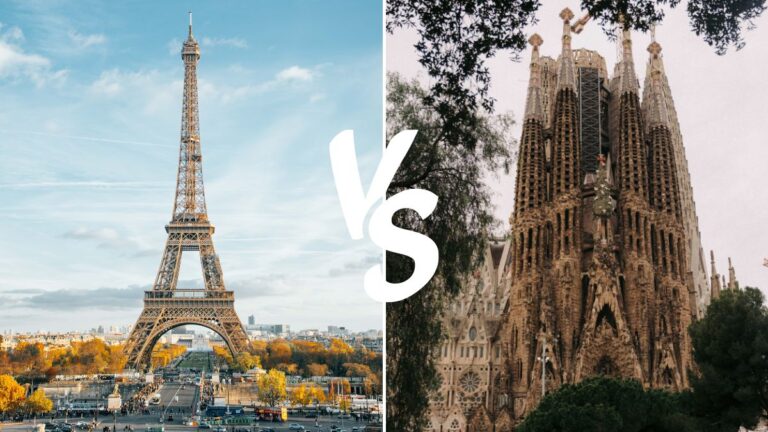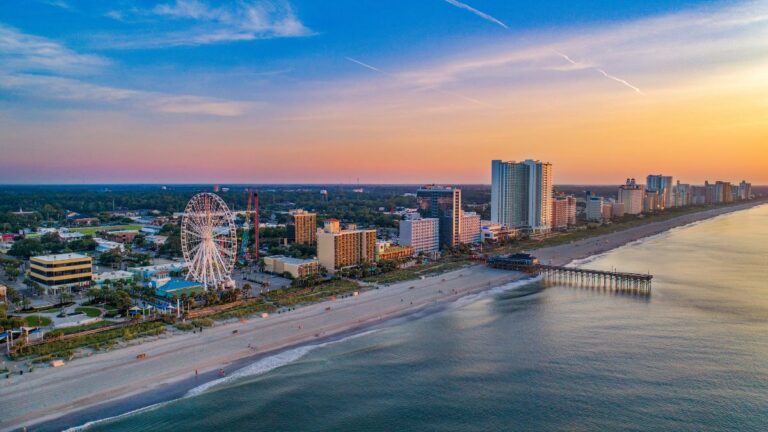Finland vs. Iceland: Northern Lights and Nature’s Wonders
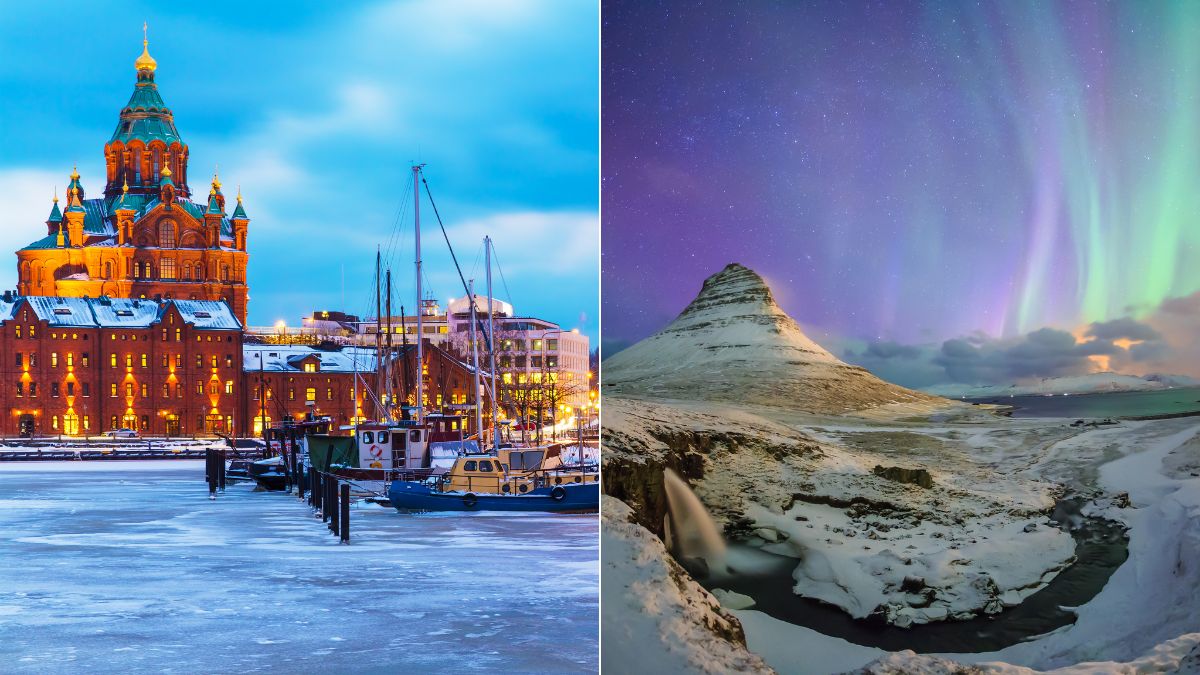
As participants in Amazon Associates and other programs, we earn from qualifying purchases. This comes at no additional cost to you. For more details, see our Affiliate Disclosure.
Finland and Iceland, two of the most enchanting destinations in the far north, are renowned for their spectacular displays of the Northern Lights. While Finland offers serene forests and tranquil lakes, Iceland boasts dramatic volcanic landscapes, each providing a unique backdrop to nature’s most awe-inspiring shows. This article compares these two Nordic countries, exploring how they differ and what makes each one special in its own way. From celestial dances in the sky to the rich natural beauty on the ground, we journey through Finland and Iceland to uncover the wonders they hold.
Chasing the Aurora: Northern Lights in Finland vs. Iceland
The Northern Lights, a spectacular natural light show, illuminate the skies of both Finland and Iceland, drawing visitors from around the world. These two Nordic countries offer distinct experiences for Aurora chasers, each with its unique charm and natural backdrop. The journey to witness this celestial phenomenon in these lands is not just about the lights themselves but also about the contrasting landscapes and cultures that frame these luminous displays.
Finland
In Finland, the Northern Lights are a common sight in the winter months, especially in the Lapland region, where they appear on up to 200 nights a year. The Finnish landscape provides a serene setting for Aurora viewing, with its sprawling forests and numerous lakes reflecting the celestial dance. Finnish Lapland, a region known for its wilderness and winter activities, offers not just a view of the Auroras but a chance to experience them in traditional settings. Think cozy log cabins, reindeer sleigh rides, and the silence of snow-covered forests, enhancing the mystical experience of watching the Northern Lights.
Iceland
Iceland, meanwhile, presents a more dramatic backdrop for the Northern Lights. With its volcanic landscapes, glaciers, and rugged coastlines, the country turns into a dramatic stage for the Auroras. In Iceland, the lights often illuminate unique landscapes like the Jökulsárlón Glacier Lagoon and the Thingvellir National Park, offering a stark contrast to the serene Finnish views. The unpredictable Icelandic weather adds an element of surprise to Aurora chasing here, making each sighting a hard-earned and exhilarating experience. The combination of hot springs, such as the Blue Lagoon, under the shimmering lights offers a uniquely Icelandic twist to the experience.
While both Finland and Iceland offer unforgettable Northern Lights experiences, they cater to different tastes and expectations. Finland wins for those seeking a serene, fairy-tale-like atmosphere amidst snowy forests and cozy cabins. Iceland, on the other hand, is the choice for those who favor dramatic landscapes and a sense of adventure in their Aurora chasing journey.
Landscapes Unveiled: Natural Beauty of Finland and Iceland
The natural landscapes of Finland and Iceland are as captivating as the celestial lights that dance above them. Both countries boast an array of stunning natural features, but they differ greatly in their geographical and environmental characters. From the serene beauty of Finland’s forests and lakes to the raw, volcanic majesty of Iceland’s terrain, these countries offer contrasting yet equally mesmerizing natural wonders.
Finland
Finland is often referred to as the “land of a thousand lakes,” and this moniker barely scratches the surface of its natural beauty. The country is home to over 188,000 lakes, creating a landscape that is as tranquil as it is expansive. These water bodies, along with Finland’s vast boreal forests, make up a landscape that changes dramatically with the seasons. In winter, the snow-covered trees and frozen lakes offer a serene and almost otherworldly beauty, while summer brings a lush, vibrant green that transforms the countryside. Finnish nature is not just about its stillness; it’s also about the gentle rhythm of life that flows through its forests and lakes.
Iceland
Contrastingly, Iceland’s natural beauty is defined by its dramatic and rugged landscapes. This island nation is a land of fire and ice, home to active volcanoes, vast glaciers, thundering waterfalls, and geothermal springs. The Icelandic landscape is constantly being reshaped by the elemental forces of nature, creating a dynamic and sometimes stark beauty. From the black sand beaches of Vik to the soaring cliffs and waterfalls of the Westfjords, Iceland’s landscapes are wildly diverse. The raw power of nature is ever-present here, from the spouting geysers to the creeping glaciers, offering a stark contrast to Finland’s more gentle natural scenery.
In comparing the natural beauty of Finland and Iceland, it’s clear that each offers a unique experience. Finland is the winner for those seeking tranquility and a connection with a gentler, more serene natural world. Iceland, however, stands out for those who are drawn to dramatic, powerful landscapes and the raw beauty of nature in its most elemental forms. The choice between the two depends on what kind of natural wonder you’re seeking.
Cultural Connections: Local Traditions and Nature
The cultural landscapes of Finland and Iceland are deeply intertwined with their natural environments, reflecting a unique blend of traditions, histories, and lifestyles that are as varied as the Northern Lights themselves. Both nations have cultures that have evolved in harmony with their natural surroundings, offering rich, distinctive experiences that go beyond mere sightseeing. These cultural connections provide a deeper understanding and appreciation of the lands and their people.
Finland
In Finland, the connection between culture and nature can be seen in every aspect of life, from the traditional Finnish sauna, which is a staple in many homes, to the deep-rooted practice of ‘Everyman’s Right’, allowing free access to the country’s vast natural areas for foraging, fishing, and camping. Finnish culture is marked by a profound respect for nature, seen in their sustainable living practices and the celebration of natural phenomena like the midnight sun and the Northern Lights.
The Finns also have a strong tradition of storytelling and folklore, much of which is inspired by their natural surroundings, from ancient forests to the mythical creatures that are said to inhabit them. This deep connection with nature is reflected in Finnish art, literature, and everyday life, making it an integral part of the Finnish identity.
Iceland
Iceland’s culture, meanwhile, is heavily influenced by its dramatic landscapes and the need to adapt to its challenging environment. Icelandic sagas, a unique genre of medieval literature, are filled with tales that intertwine human struggles and triumphs with the raw, powerful elements of the Icelandic nature. The traditional turf houses, a response to Iceland’s harsh climate and lack of wood, are a testament to the ingenuity and resilience of the Icelandic people.
Festivals and traditions, such as the midsummer celebration of Jónsmessa, are deeply connected to the land and its seasons. The strong sense of community in Iceland, necessary for survival in such an environment, is evident in their communal geothermal pools, which serve as social hubs, and in the way the entire nation comes together to celebrate or face collective challenges.
Both Finland and Iceland offer a unique perspective on how culture and nature can be intertwined. Finland stands out for its peaceful coexistence with nature, reflected in its sustainable practices and deep respect for the environment. Iceland, on the other hand, showcases a culture forged by the need to adapt to and live in harmony with a more volatile and dramatic natural world.
Adventure Awaits: Outdoor Activities in Finland and Iceland
Finland and Iceland are playgrounds for outdoor enthusiasts, offering a range of activities that make the most of their unique landscapes. Whether it’s the serene beauty of Finland’s lakes and forests or the raw, dramatic terrain of Iceland, there’s no shortage of adventures to be had. Each country offers its own brand of outdoor excitement, catering to different tastes in adventure and exploration.
Finland
In Finland, outdoor activities often revolve around the country’s abundant forests and lakes. Summer is ideal for hiking, cycling, and kayaking, with Finland’s extensive network of national parks, like the Oulanka and Nuuksio, providing the perfect backdrop. The Finnish concept of “Everyman’s Right” allows free access to most public lands for camping, fishing, and berry picking, encouraging a close connection with nature.
Winter transforms the landscape into a wonderland perfect for skiing, snowshoeing, and ice fishing. Perhaps the most unique Finnish experience is a husky-led sled ride through the snowy forests, an enchanting way to explore the winter scenery. These activities, combined with the peace and quiet of the Finnish wilderness, offer a tranquil yet engaging outdoor experience.
Iceland
Iceland’s rugged and varied landscape makes it an ideal destination for more adrenaline-fueled outdoor activities. The country’s geothermal activity creates opportunities for unique experiences like bathing in natural hot springs or exploring ice caves and lava tubes. Hiking and climbing in areas like the Thorsmork Valley or the Skaftafell in Vatnajokull National Park can be breathtaking, with scenery ranging from glaciers to volcanic craters.
In the winter, Iceland offers excellent opportunities for glacier hiking, snowmobiling, and even ice climbing. The surrounding seas also offer adventures such as whale watching and sea kayaking, providing a different perspective on Iceland’s dramatic coastline and rich marine life.
Both Finland and Iceland offer a plethora of outdoor activities, but they cater to different types of adventurers. Finland is the clear winner for those who seek serene interactions with nature, like peaceful hikes and lake kayaking. In contrast, Iceland is the ideal choice for those looking for high-energy, adrenaline-pumping adventures against a backdrop of dramatic natural wonders. The choice between the two depends on what kind of outdoor adventure one is looking for.
Seasonal Splendors: Best Times to Visit for Nature’s Displays
Finland and Iceland, with their distinct climatic conditions and geographical locations, offer varied and unique natural displays across different seasons. Understanding the best times to visit these countries for specific natural phenomena can greatly enhance the travel experience. Whether it’s to witness the Northern Lights, enjoy the midnight sun, or explore the natural landscapes, each season in Finland and Iceland has its own charm and set of attractions.
Finland
In Finland, the seasons dramatically transform the landscape, offering different experiences throughout the year. Winter, lasting from December to March, is ideal for witnessing the Northern Lights, especially in the northern regions like Lapland. This is also the perfect time for winter sports and activities like skiing and husky sledding.
Spring, with its longer days and milder weather, is great for exploring the awakening nature and bird watching. Summer, particularly from June to August, is celebrated with the magical midnight sun, providing endless daylight hours for hiking, cycling, and lake activities. Autumn brings a stunning display of fall colors, especially in the Finnish Lakeland and Lapland regions, making it a great time for scenic drives and nature photography.
Iceland
Iceland, known for its volatile and unpredictable weather, also offers distinct experiences each season. The best time to see the Northern Lights in Iceland is from September to March, when the nights are longest. Winter is also the time for unique experiences like ice cave tours and snowmobiling on glaciers.
Summer, from June to August, is the peak tourist season, offering milder weather and the phenomenon of the midnight sun, which allows for extended sightseeing and exploration. This is the best time for hiking, wildlife watching (including puffins), and road trips along the Ring Road. Spring and autumn are transition seasons in Iceland, offering fewer tourists and the chance to see the country’s landscapes in a different light, with spring flowers or autumn colors.
Deciding the best time to visit Finland and Iceland depends on what natural displays and activities one is interested in. For those seeking the Northern Lights and winter wonderland experiences, the winter months are ideal in both countries. Summer offers the unique midnight sun and warmer weather for outdoor activities. Both Finland and Iceland have their unique seasonal splendors, making them year-round destinations, each with its own distinctive appeal.

